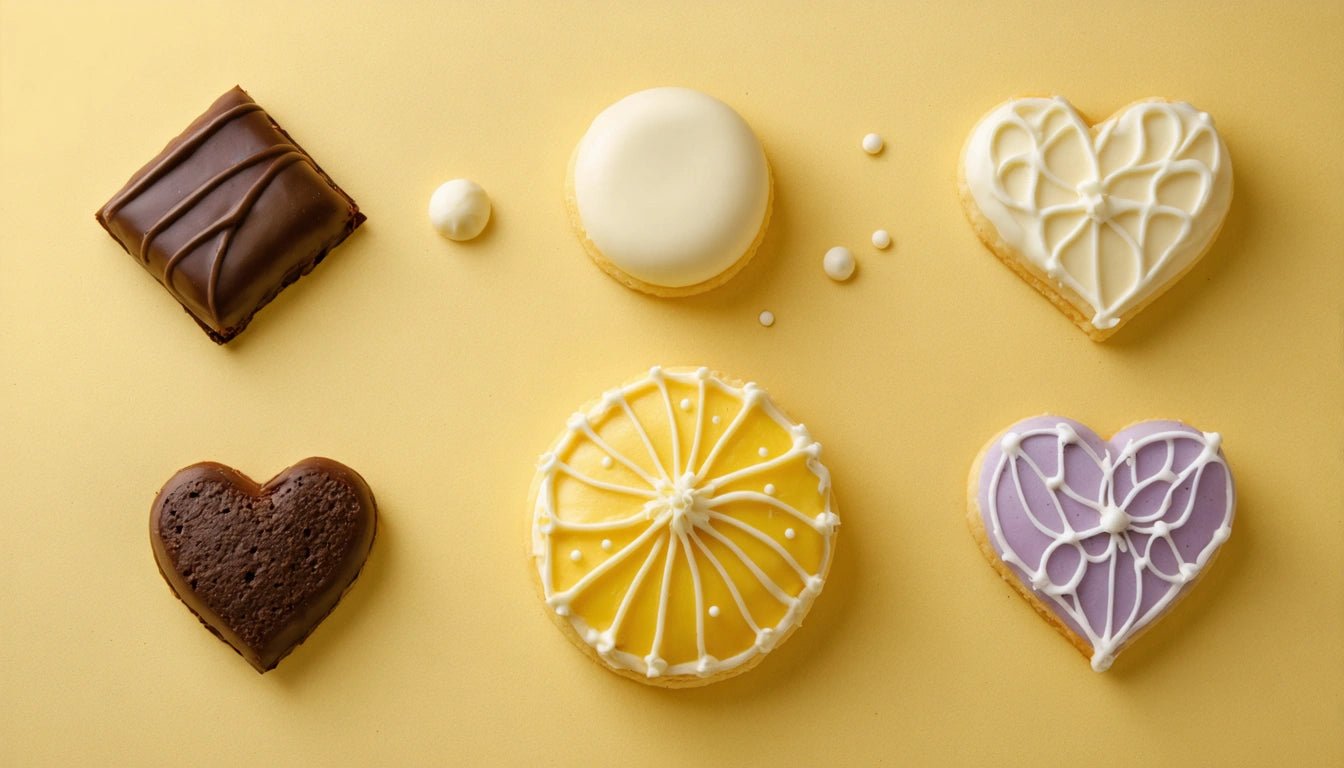Table of Contents
Exploring the Various Types of Icing
Icing is the crowning glory of many baked goods, adding flavor, moisture, and decorative appeal. Understanding the different kinds of icing available can elevate your baking from simple to spectacular. Each type has unique properties, ingredients, and best uses that can dramatically impact the final presentation and taste of your creation.
Understanding Icing Basics
Before diving into specific varieties, it's helpful to understand that icings generally fall into several categories based on their consistency, ingredients, and application methods. Some are soft and creamy, while others harden to create a protective shell. The right choice depends on your specific baking project, desired finish, and the conditions in which your baked goods will be served.
Buttercream Icing
Buttercream is perhaps the most versatile and popular of all icings. It's creamy, flavorful, and can be piped into various decorative elements.
American Buttercream
This is the simplest form of buttercream, made by beating together butter and confectioners' sugar. It's sweet, stable at room temperature, and easy to color and flavor. American buttercream is ideal for cupcakes, layer cakes, and cookies when you need a quick, reliable icing.
Swiss Meringue Buttercream
Swiss meringue buttercream begins with egg whites and sugar heated over a double boiler, then whipped to stiff peaks before adding butter. The result is silky, less sweet than American buttercream, and excellent for smooth finishes. This type holds up well in warmer temperatures, making it suitable for outdoor events.
Italian Meringue Buttercream
Similar to Swiss meringue but made by pouring hot sugar syrup into whipping egg whites, Italian meringue buttercream is the most stable of the meringue buttercreams. Its light texture and subtle sweetness make it a favorite for wedding cakes and professional baking.
Fondant Icing
Fondant creates a smooth, matte finish that's perfect for elegant cakes and professional-looking designs.
Rolled Fondant
This pliable sugar paste can be rolled out and draped over cakes for a perfectly smooth finish. It's ideal for creating clean lines and serves as an excellent canvas for more elaborate decorations. While some bakers prepare their fondant using specialized rolling techniques similar to those used in other crafts, most professionals use premade fondant for consistency.
Poured Fondant
A thinner version that can be poured over petit fours and other small pastries. It sets with a slight sheen and can be flavored and colored as desired.
Royal Icing
Made from egg whites and confectioners' sugar, royal icing dries to a hard, candy-like consistency. It's perfect for detailed decorative work, like piping intricate designs on cookies or creating delicate sugar flowers. Royal icing can be adjusted to different consistencies for various techniques, from flooding to detailed line work.
The versatility of royal icing makes it comparable to how different styles of lettering can transform the look and feel of a design project.
Cream Cheese Icing
A tangy alternative to buttercream, cream cheese icing combines cream cheese with butter and confectioners' sugar. It's the classic choice for carrot cake, red velvet cake, and cinnamon rolls. While less stable at room temperature than some other options, its flavor makes it worth the extra care needed.
Ganache
This luxurious mixture of chocolate and cream can be used as a glaze, filling, or whipped into a frosting-like consistency. Ganache adds rich flavor and a glossy finish to cakes and pastries. Dark chocolate ganache offers a less sweet option for sophisticated desserts, while white chocolate versions can be colored for creative applications.
Glaze Icing
Simple and versatile, glaze is made from confectioners' sugar mixed with a liquid like milk, water, or fruit juice. It can be poured over bundt cakes, drizzled on cookies, or used as a base for more complex icings. Glazes set with a slight sheen and can be flavored with extracts, zest, or spices.
The application of glazes requires careful consideration of consistency, similar to how various types of logos must be adapted for different applications while maintaining brand identity.
Whipped Cream Icing
Light and airy, whipped cream icing is made by whipping heavy cream with sugar and sometimes stabilizers. It's perfect for delicate cakes and pastries that are served immediately or refrigerated until serving. Stabilized versions can hold up longer but still require cool temperatures.
The process of creating stable whipped cream icing involves techniques that carefully incorporate air, not unlike the methods used in melt and pour soap making where timing and temperature control are crucial.
Choosing the Right Icing for Your Project
Selecting the appropriate icing depends on several factors:
- Temperature and environment where the baked goods will be served
- Desired appearance and finish
- Flavor profile that complements the base
- Level of detail in decorative elements
- Storage requirements and shelf life
Just as different types of packaging solutions serve specific purposes, each icing variety has optimal applications. For instance, a wedding cake for an outdoor summer reception might benefit from the stability of Italian meringue buttercream, while cookies for shipping would require the durability of royal icing.
Understanding the properties and behaviors of different types of icing empowers bakers to make informed choices that enhance both the aesthetic appeal and flavor profile of their creations. With practice and experimentation, you can master these various icings and expand your baking repertoire to include stunning, professional-quality decorated treats.



















